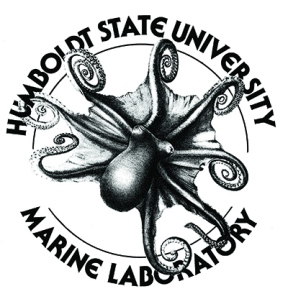
When someone says “We have some colorful visitors.” in this area of the green triangle a person might not expect them to be speaking quite so literally. However, more commonplace then trimmers this time of year are some extraordinary and brightly colored marine interlopers who generally don’t make it this far north. Warmer ocean temperature have been observed over the past year or so and are thought to have caused a number of noteworthy marine invertebrates to wash up on the shores of Humboldt and nearby counties. One of the most outlandish newcomers includes a invertebrates a color usually only seen on a my little pony figurine; a bright lavender snail.
The peculiar visitors are lavender colored snails known colloquially as Violet Snails or common purple snails and scientifically as Janthina janthina. Not only are these snails are striking in appearance but their behavior and feeding methods are another level of strange. Janthina janthina is a carnivorous and hermaphroditic snail and is only one of ten species that are known to make bubble rafts for flotation. These snails extrude a purple mucous from their foot that quickly hardens in the water and allows to float along underneath the surface of the open ocean. Often these bubbles rf are formed in groups and Janthina janthina can be found in colonies of hundreds floating out on the open ocean.

Even odder than its floating bubble riding buddies is its pelagic prey. Jelly fish are often pelagic animals as well and a few even use floats, sac filled with air, attached to their bodies to float along the water’s surface. Conveniently, this is also where these purple snails love to be so they often make snacks of the jellyfish around them. Janthina janthina only gets about 1-2 1/2 inches but has been known to eat Velella velella, which washed up in mass amounts in Humboldt County coasts earlier this year, and even Portuguese Man o’ War. This snail’s small size and hardly intimidating hue doesn’t seem to affect its appetite for these creatures that are venomous and known to deliver a excruciating sting to humans. However, similar to the Honey badger Purple snail don’t care.

Normally these purple oddballs are confined to the warmer parts of both the Atlantic and Pacific Ocean. Humboldt coasts cold ocean temperatures typically would keep them much farther south as they can’t survive in cold water. However due to abnormally warm temperatures recorded a local HSU biologist spotted them washed up on the shore of a Humboldt County beach near a beached Vellela velella unsurprisingly. That purple snail seems to have followed its lunch a little too far, hopefully the warm ocean temperatures and abundant food sources won’t lure too many Janthina in to the shores of Humboldt County despite their striking beauty. Be sure to keep an eye out for them on the local beaches. However, if one is found on the shores be cautious its purple color is not just on its shell, it can give you actually release out a purple fluid. When upset the snail acts as a mall security tag and secretes a dye that marks its disturber, so leave them be or be semi-permanently branded as a snail botherer!
References
Dell’more, Christine. “Pictures: How Bubble-Rafting Snails Evolved.” National Geographic. National Geographic, 19 Oct. 2011. Web. 25 Apr. 2015. <http://news.nationalgeographic.com/news/2011/10/pictures/111019-about-sea-snail-mucus-bubble-rafts/>.
Leatherbury Douglass, Jackie. Peterson First Guide of Shells of North America. New York: Houghton Mifflin, 1989. Print.
Savage, Jennifer. “Your Week in Ocean: Purple Snails Ride ‘Warm Blob’ to Local Shores.” Lost Coast Outpost. Lost Coast Outpost, 5 Apr. 2015. Web. 25 Apr. 2015. <http://lostcoastoutpost.com/2015/apr/9/your-week-ocean-purple-snails-and-warm-blob/>.
.

